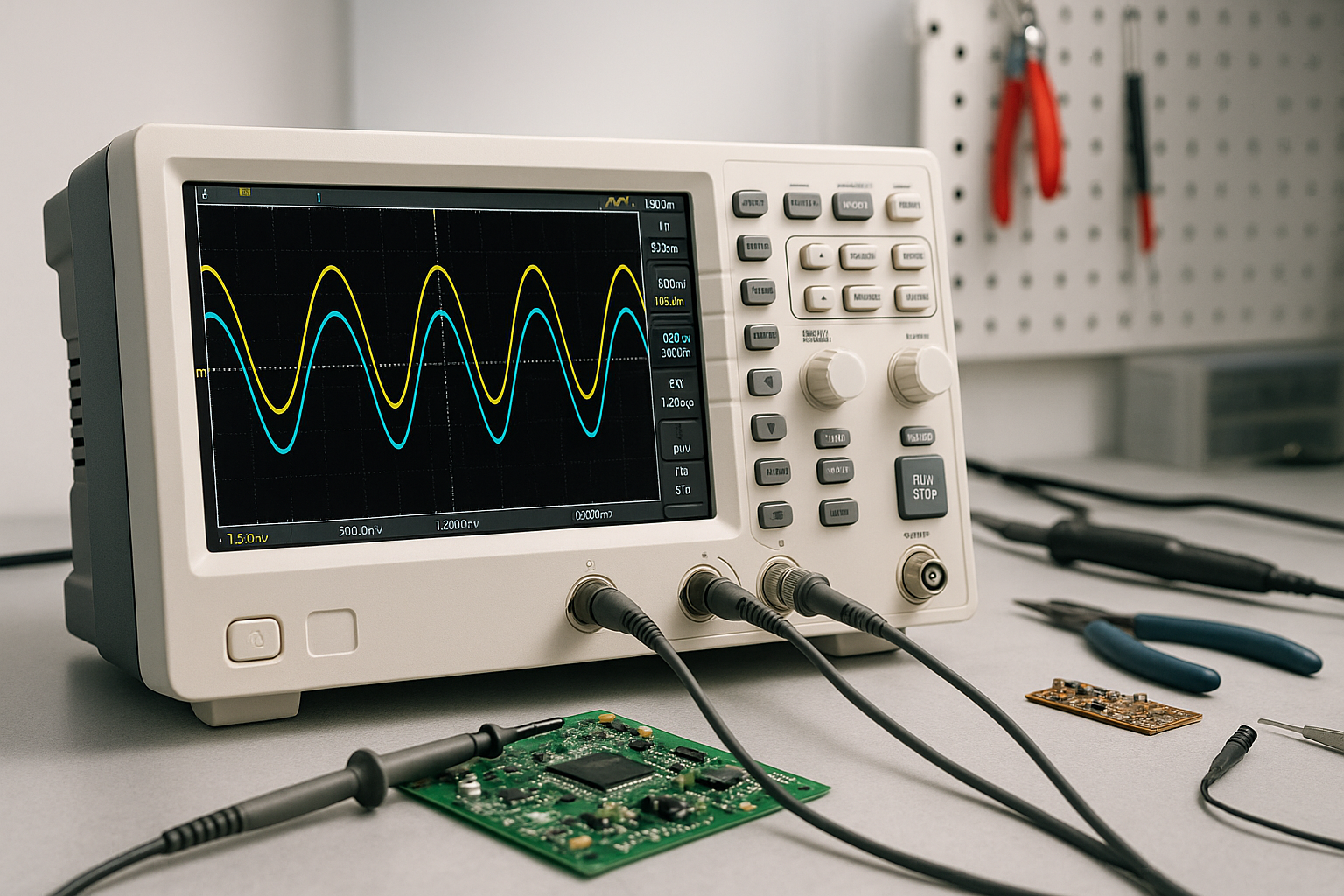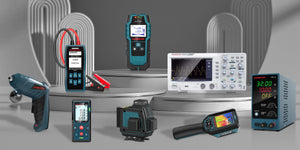
Understand Oscilloscope Waveform and Signal Analysis in 5 Minutes
Are you ready to dive into the world of oscilloscopes? In just 5 minutes, you can gain a solid understanding of waveform and signal analysis with this essential tool.
What is an Oscilloscope?
An oscilloscope is a powerful electronic instrument used to observe the change of an electrical signal over time. It displays the waveform of the signal, allowing users to analyze its characteristics such as amplitude, frequency, and phase.
How Does an Oscilloscope Work?
By connecting the oscilloscope probe to the circuit under test, the instrument captures the voltage variations and plots them on a graph with time on the x-axis and voltage on the y-axis. This visual representation helps users identify abnormalities or anomalies in the signal.
Understanding Waveforms
Waveforms are graphical representations of how a signal varies with time. Common types of waveforms include sine waves, square waves, and sawtooth waves. Each waveform has unique characteristics that provide valuable insights into the behavior of the signal.
Signal Analysis
Signal analysis involves examining the waveform to extract useful information. This can include measuring voltage levels, calculating frequency, determining rise and fall times, and identifying noise or distortion in the signal. Oscilloscopes offer a range of tools and features to facilitate in-depth signal analysis.
Key Features of Oscilloscopes
Modern oscilloscopes come equipped with a variety of features to enhance signal analysis, such as automatic measurements, FFT analysis, advanced triggering options, and waveform math functions. These features enable users to perform complex analyses with ease and accuracy.
With a basic understanding of oscilloscope fundamentals, you can confidently navigate waveform and signal analysis in your electronic projects. Whether you are a beginner or an experienced engineer, mastering the use of an oscilloscope is essential for troubleshooting, testing, and validating electronic circuits.
Key Waveform Parameters
To read and analyze signals effectively, it’s important to understand the core waveform parameters:
| Parameter | Description | Example |
|---|---|---|
| Period (T) | Time for one complete cycle of the waveform | 1 ms |
| Frequency (f) | Number of cycles per second (f = 1/T) | 1 kHz |
| Amplitude (Vpp) | Peak-to-peak voltage difference | 5 V |
| Rise Time | Time for the signal to rise from low to high level | 20 ns |
| Duty Cycle | Percentage of one cycle where the signal is high | 50% |
How to Analyze a Signal with an Oscilloscope

- Connect the probe to the signal test point and ground clip.
- Adjust the timebase and voltage scale until the waveform fits clearly on screen.
- Use the trigger function to stabilize the waveform display.
- Measure automatically using built-in frequency, amplitude, or RMS tools.
- Compare channels to observe input vs. output waveforms for circuit debugging.
Recommended Hanmatek Oscilloscopes
Desktop High-Performance Oscilloscope — Hanmatek DOS1102
The Hanmatek DOS1102 offers 110MHz bandwidth and 1GSa/s sampling rate, supporting dual-channel input and a 7-inch high-resolution display. Perfect for labs, education, and R&D environments.
It delivers stable performance and exceptional value, making it an excellent choice for both students and engineers.
Learn more: Hanmatek DOS1102
Portable Handheld Oscilloscope — Hanmatek HO11
The Hanmatek HO11 features 10MHz bandwidth and 500MSa/s sampling rate in a lightweight, USB-rechargeable design. It includes a 2.8-inch color display and supports on-the-go testing.
This model is ideal for mobile repair technicians, outdoor engineers, and quick diagnostic tasks where portability is key.
Learn more: Hanmatek HO11 Handheld Oscilloscope
Conclusion
By now, you should have a clear understanding of oscilloscope basics—how they work, what waveform parameters mean, and how to measure signals effectively. Whether you’re learning electronics or performing professional testing, choosing the right oscilloscope makes all the difference.
For comprehensive signal analysis and reliable performance, Hanmatek DOS1102 and Hanmatek HO11 are two excellent options trusted by engineers worldwide.




Leave a comment